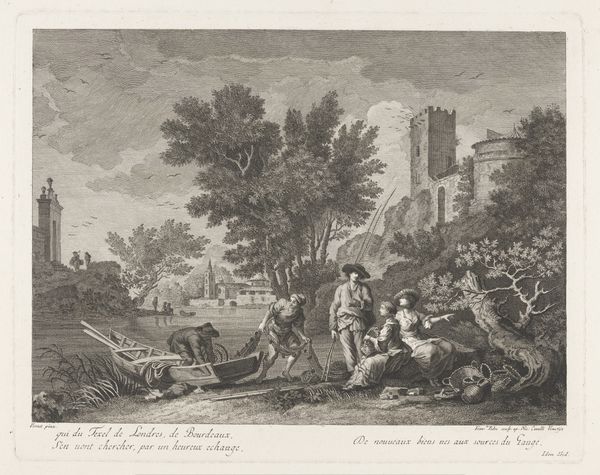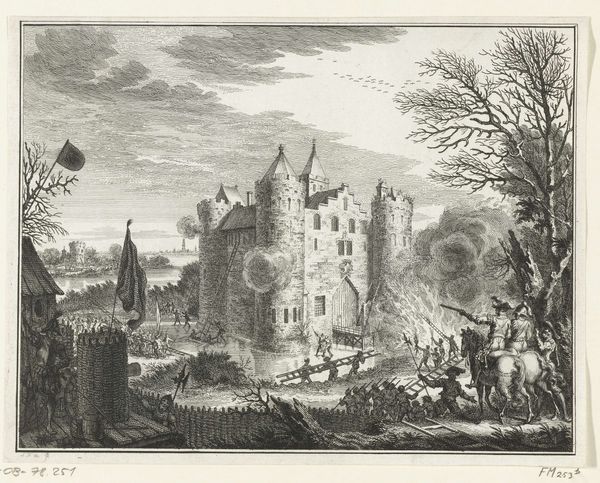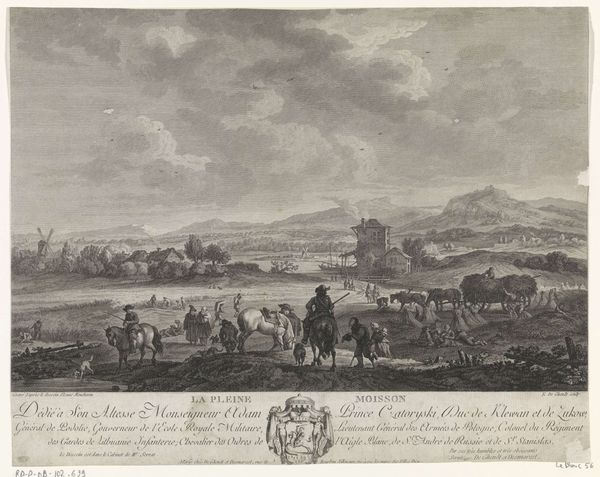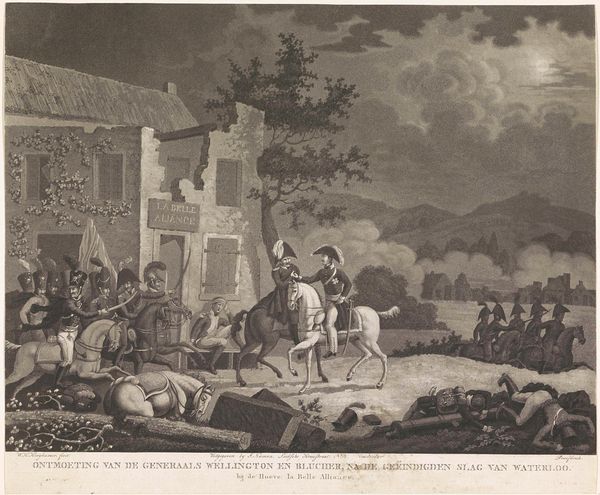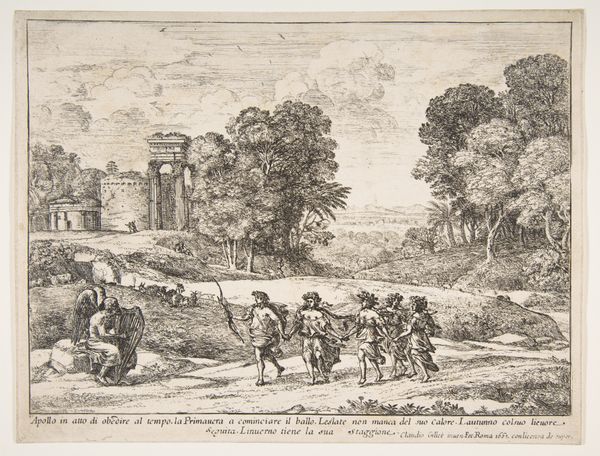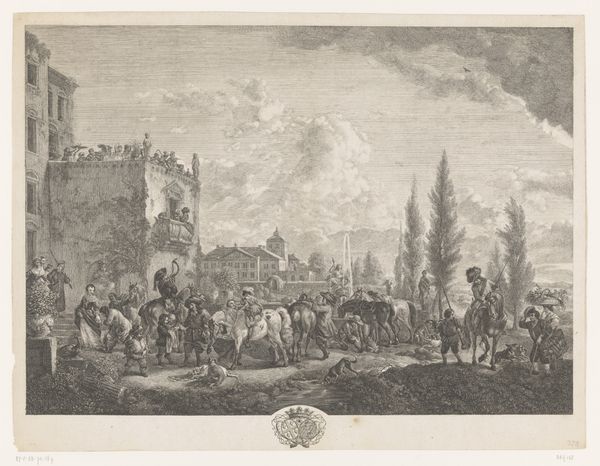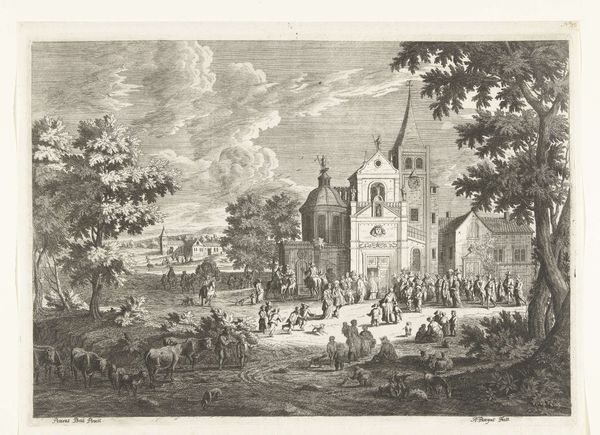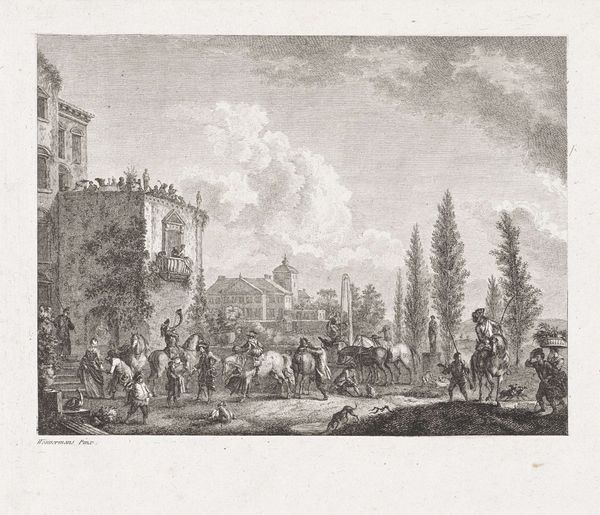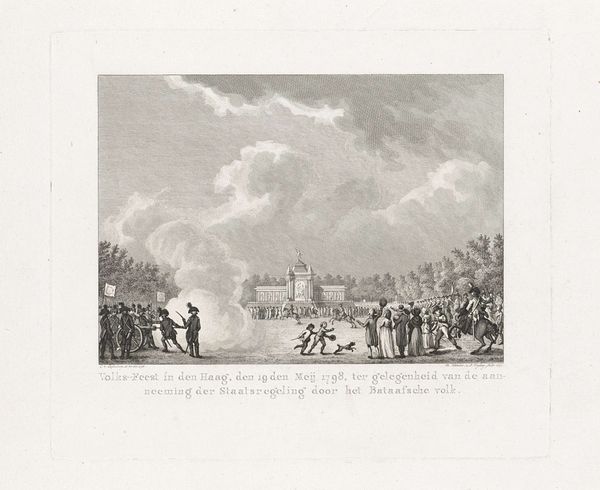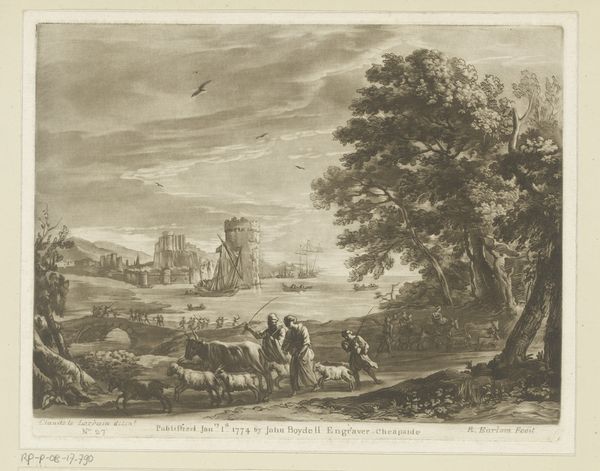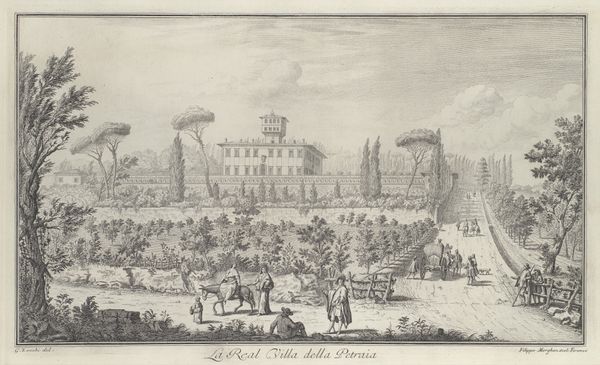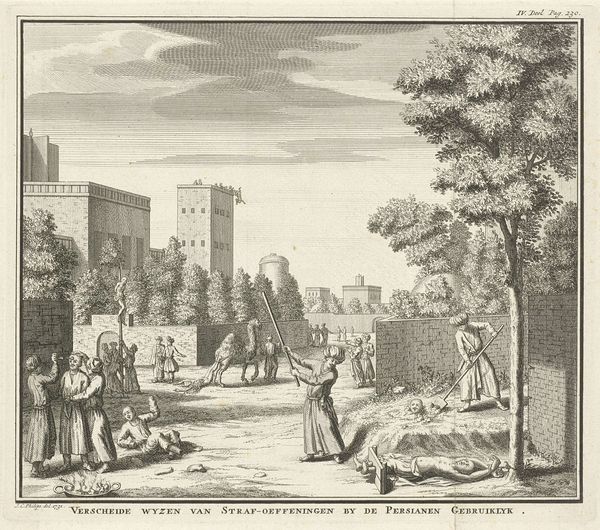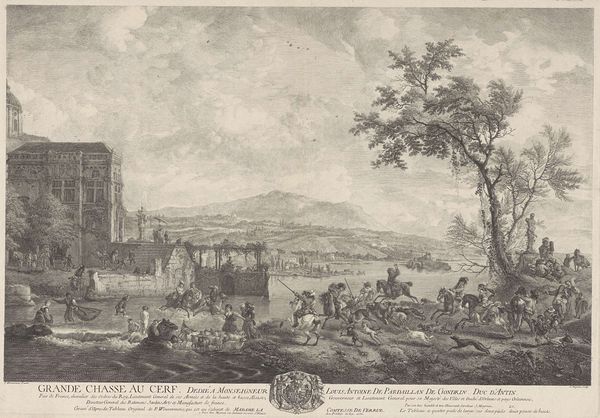
Dimensions: height 170 mm, width 202 mm
Copyright: Rijks Museum: Open Domain
Simon Fokke made this print, "Inname van Brielle, 1572," in the mid-18th century using etching and engraving techniques. These processes involve coating a metal plate with a waxy ground, drawing through it to expose the metal, and then using acid to bite the design into the plate. The fine, precise lines we see here result from Fokke's skilled manipulation of these methods. The varying depths and densities of lines create tonal contrasts, which give the image depth and texture. Historically, printmaking allowed for the mass production of images, making them accessible to a wider audience. In this case, Fokke's print commemorates a key moment in Dutch history: the capture of Brielle by the Watergeuzen, marking a pivotal event in the Dutch Revolt against Spanish rule. The labor-intensive process of etching and engraving, combined with its reproductive capacity, highlights the intersection of craft, art, and the dissemination of political narratives. It reminds us that even seemingly straightforward historical depictions are the product of meticulous work and material processes.
Comments
No comments
Be the first to comment and join the conversation on the ultimate creative platform.
